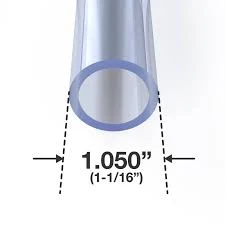Oct . 15, 2024 17:49 Back to list
Exploring the Benefits of Transparent PP Sheets for Various Applications
The Versatility of PP Transparent Sheets
Polypropylene (PP) transparent sheets have become an essential material in various fields due to their unique properties and versatility. Made from a thermoplastic polymer, these sheets offer a range of benefits that make them suitable for applications in packaging, construction, signage, and many other industries. This article delves into the characteristics, advantages, and applications of PP transparent sheets, showcasing why they are increasingly favored in both commercial and industrial sectors.
Characteristics of PP Transparent Sheets
PP transparent sheets are known for their excellent clarity and transparency, which makes them an ideal choice for applications where visibility is crucial. Additionally, they are lightweight yet sturdy, providing a robust solution without adding excessive weight. Their resistance to impact and scratches ensures longevity, making them suitable for environments that require durability.
Another significant characteristic of PP sheets is their chemical resistance. They can withstand exposure to various chemicals, including acids and solvents, which makes them suitable for use in laboratories and industries that handle hazardous materials. Moreover, PP sheets are moisture-resistant, preventing water absorption that could compromise the integrity of the material.
In terms of temperature resistance, polypropylene can endure a range of temperatures, making it useful in applications that involve thermal exposure. This versatility in temperature allows it to perform effectively in both hot and cold environments.
Advantages of Using PP Transparent Sheets
One of the main advantages of PP transparent sheets is their environmental friendliness. Polypropylene is recyclable, meaning that it can be processed and reused, reducing waste and the environmental impact. This characteristic aligns with growing trends toward sustainability and eco-friendly practices in various industries.
pp transparent sheet

In addition, PP transparent sheets are cost-effective. Their production is relatively inexpensive compared to other materials like acrylic or polycarbonate, making them an economical choice for businesses. Despite their lower cost, they do not compromise on quality or performance, providing a reliable option for various uses.
Another critical advantage is the ease of fabrication that PP sheets offer. They can be easily cut, shaped, or welded, allowing for customization according to specific requirements. This flexibility enables manufacturers and designers to create tailored solutions, whether for prototypes, packaging, or end products.
Applications in Various Industries
PP transparent sheets find applications in a myriad of industries. In packaging, they are commonly used for creating boxes, containers, and protective covers that require visibility and durability. Their lightweight nature also helps reduce shipping costs, which is a critical factor for businesses looking to optimize their supply chains.
In the construction and signage sectors, PP sheets are utilized for making displays, windows, and partitions. Their clarity ensures that graphics and information are easily visible, while their robustness ensures that they can withstand various environmental conditions.
Moreover, in the educational and office supply sectors, PP transparent sheets are often used for creating covers for reports, presentations, and projects. Their professional appearance combined with their protective qualities makes them a favorite among students and professionals alike.
Conclusion
Overall, PP transparent sheets represent a remarkable blend of versatility, durability, and cost-effectiveness. Their unique properties enable them to fulfill the needs of various industries, from packaging and construction to signage and education. As innovation continues to drive the development of materials and sustainability becomes increasingly important, the utilization of PP transparent sheets is expected to grow even further. Whether you're a manufacturer, designer, or consumer, understanding the benefits and applications of these sheets can help you make informed decisions that enhance both functionality and environmental responsibility.
-
High-Quality PPR Pipes and Fittings Durable ERA PPR & PVC PPR Solutions
NewsJul.08,2025
-
Black HDPE Cutting Board - Durable, Non-Porous & Food Safe HDPE Plastic Cutting Board
NewsJul.08,2025
-
High-Quality CPVC Panel Durable HDPE & PVC Panels Supplier
NewsJul.08,2025
-
Double PE Welding Rod Supplier - High Strength, Durable & Versatile Welding Solutions
NewsJul.07,2025
-
High-Quality PVC-O Pipe Supplier Durable 75mm PVC Pipe & Connections Leading PVC Pipe Company
NewsJul.07,2025
-
HDPE Drainage Pipe Supplier – Durable & Corrosion-Resistant Solutions
NewsJul.06,2025

